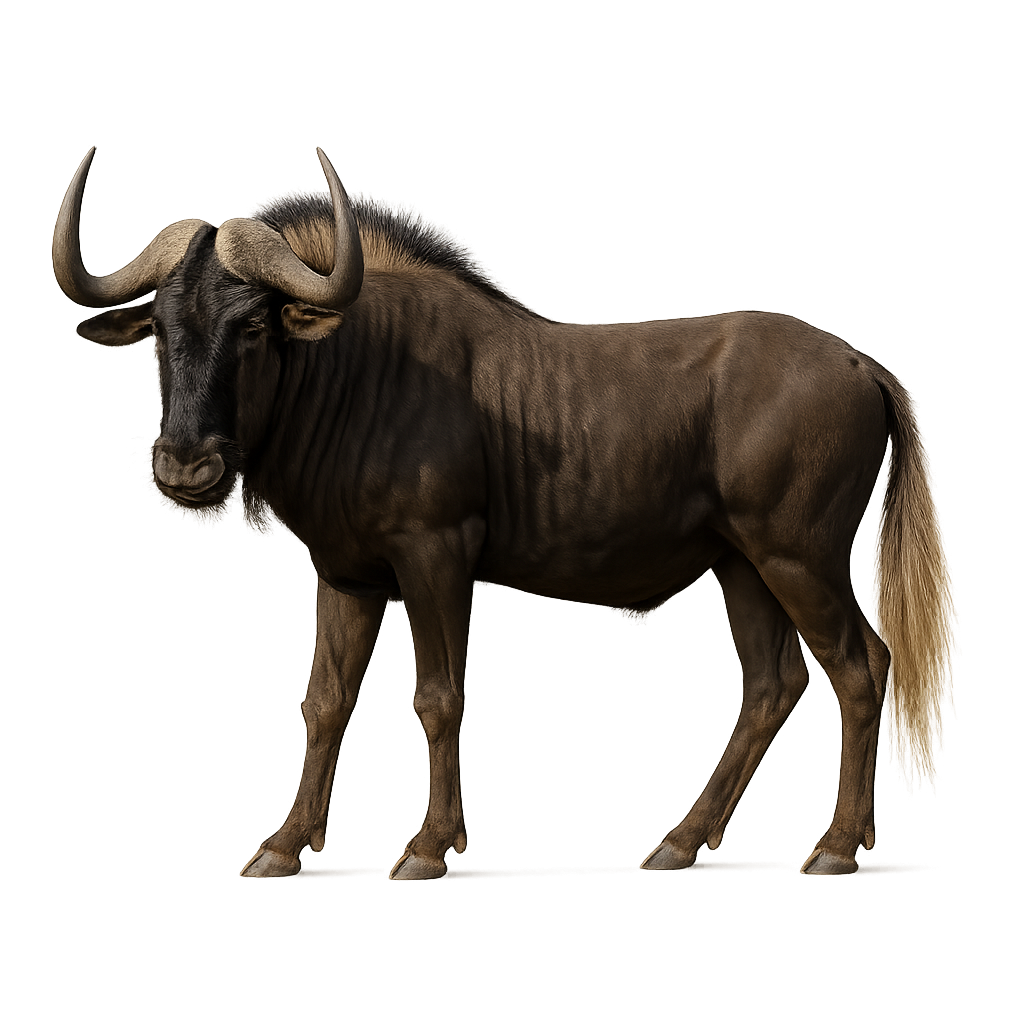Observe and photograph a species in its natural habitat
Learn where and when to observe a species in the wild, how to recognize it in the field, and what habitats it lives in. Get photography tips adapted to its behavior and capture stunning images without disturbing the animal. For full details, open the complete profile in the WildlifePhotographer app.
Black Wildebeest
Scientific name: Connochaetes gnou

IUCN Status: Least Concern
Family: BOVIDAE
Group: Mammals
Shyness: Suspicious
Safe distance: 50 m
Breeding season / Courtship: 15.05-15.06
Gestation: 8 mois
Births: 15.01-15.02
Habitat:
Open grasslands of Southern Africa
Description:
The Black Wildebeest is a large herbivorous antelope, easily recognizable by its robust build and massive head. It stands about 1.3 to 1.5 meters at the withers and weighs between 150 and 250 kg, with males generally being larger and heavier than females. Its coat is a deep black, with white markings on the throat and legs, and a black mane that distinguishes its neck. The Black Wildebeest is particularly known for its curved horns, which can reach up to 80 cm in length. It primarily inhabits the savannas and grasslands of West and Southern Africa, notably in Senegal, Namibia, and Botswana. Herbivorous, it primarily feeds on grasses and other herbaceous vegetation. The Black Wildebeest often lives in large groups, which helps protect it from predators. While the species is not endangered, it is threatened by habitat loss and climate change, which alters its living conditions.
Recommended lens:
>=300 mm
Photography tips:
Approach slowly and quietly, using a telephoto lens to avoid disturbing the wildebeest, a social animal that can quickly flee if alarmed.
Photograph early morning or late afternoon, when soft light enhances their activity—often seen moving or grazing in large herds across open grasslands.
Capture natural behaviors like group movement, feeding, or social interactions—great for dynamic shots.
Be patient and respectful: even though common, do not interfere with their natural behavior.
IUCN status: Least Concern. Respect their habitat and follow local conservation rules.
Ready to take action?
Choose your platform and start your free trial today



